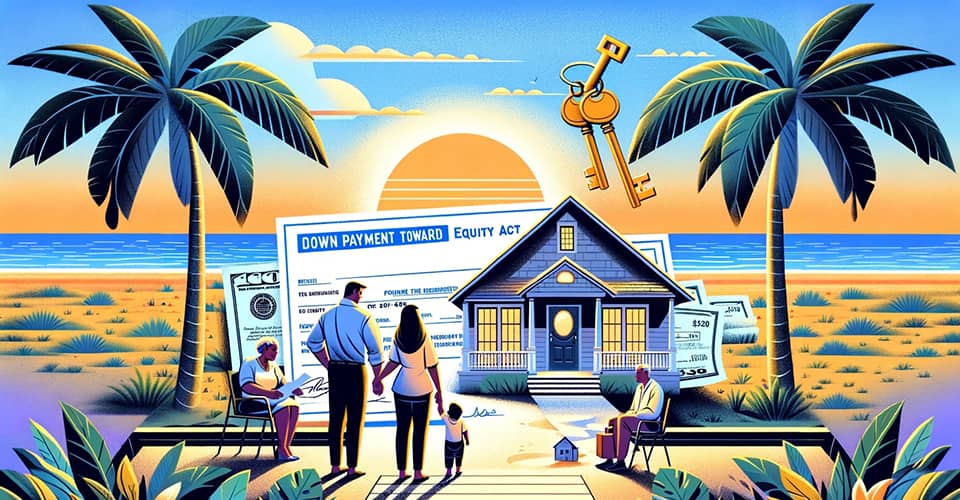Buying your first home in 2025 is both a thrilling milestone and a complex financial decision—especially amid soaring prices, higher interest rates, and stiff competition. With the median cost of a U.S. home around $417,000 in early 2025—up 27% from 2020—and the average first-time buyer now 38 years old, the journey to homeownership can be daunting But with preparation, flexibility, and the right support network, young buyers can still forge a clear path. Here’s an in-depth roadmap to guide your journey to your first home.
- Credit Score: Aim for 620 or higher to qualify for conventional loans. FHA loans may accept scores as low as 500
- Debt-to-Income Ratio (DTI): Keep housing costs under 28% of gross income and total debt under 36%; some lenders allow up to 50% with compensating strengths
- Savings: Bank both a down payment (3–20%) and closing costs (~2–6%), plus an emergency fund
- Commitment horizon: First-time homeowners usually stay in a home for 12 years—assess if you’re ready for that commitment
- Personal readiness: Consider job stability, local roots, and willingness to manage home maintenance—big responsibilities accompany homeownership
- Factor in property taxes, insurance, utilities, maintenance, HOA fees, furnishings, and taxes—these can add a significant monthly burden
- Rule of thumb: Total housing expenses should remain under 28% of gross income
- Automate saving for down payment or consider tax-advantaged options like 401(k) loans or CDs to build reserves
- Explore first-time homebuyer grants and assistance programs—many offer down payment or closing cost help, especially for moderate-income buyers
- Conventional: 3% to 20% down—PMI required if under 20% .
- FHA: Lower credit thresholds, 3.5% down.
- USDA: No down payment in eligible rural areas
- VA: No down payment for veterans
- 30-year fixed: Predictable, but higher rates.
- 15-year fixed: Lower rates, higher monthly payments.
- ARMs: Lower initial rates but can rise later—good if you plan to relocate in 5–7 years
- Query at least three lenders (banks, brokers, credit unions) to compare rates and fees—lowest APR matters most
- Brokers may access wholesale rates and personalized support
- Pre-approval confirms exactly how much you can borrow—usually after submitting documentation like tax returns, pay stubs, and bank records
- Shows sellers you’re serious and lets you act quickly—even in competitive bidding
Avoid common missteps before closing:
Don’t open new credit, move money without explanation, switch jobs, or rack up new debt—these can derail financing

- Real estate agent: Seek one experienced with first-time buyers in your desired region; interview several to find the best fit
- Mortgage broker/lender: Should guide you through loan options and rates—lean on independent brokers for better access to different loan products
- Support professionals: Include an attorney, home inspector, appraiser, and insurance agent in your team.
- Prioritize location, home type (single-family vs condo), renovation level, work/study needs, and future resale value .
- Be flexible—consider new builds, fixer-uppers, duplexes, or energy-efficient homes with lower costs
- Use VR/AR tools to explore homes remotely, especially as Millennial/Gen Z buyers expect digital insights
- Rushing in: Buying too fast can leave you underprepared for credit, savings, or inspections
- Overstretching budget: Over leverage risks financial strain; follow that 28/36 rule
- Skipping the home inspection: Essential for identifying hidden issues
- Hiring the first agent: Interview multiple—find someone aligned with your goals
- Emotional buying: Offers should be guided by market data, not emotions
- Neglecting assistance programs: Overlooked First-Time Buyer grants can offer major savings .
- Letting credit slip: High credit card balances, new inquiries, or taking on debt can increase your rate or halt approval .
- Use your team’s insight, a strong preapproval, and market comparable data for competitive offers .
- Be open to concessions—closing in fall or winter and considering minor cosmetic flaws can give negotiation leverage
- Don’t waive inspection contingencies—always inspect.
- Prepare for closing costs, walk-throughs, and signing documents in final weeks.
- Post-closing: move, set up utilities, and build maintenance savings.
- Track mortgage payments, property taxes, and insurance renewals.
- Continue improving your credit—this sets you up for refinance moves later.
- Adaptability wins: One buyer shifted to townhouses mid-journey and succeeded
- Patience helps: Timing your move and holding steady during bidding wars paid off
- Leverage networks: Family assistance, 401(k) funds, and down payment help were game changers
- Review credit & DTI; build emergency/closing fund
- Explore mortgage types and pre-approve with multiple lenders
- Interview agents and key service providers
- Prepare wishlist and remain budget-savvy
- Avoid overspending, skipping inspection, or weakening finances mid-purchase
- Stay patient; flex strategy when competition is tough
- Use grants if eligible; negotiate wisely based on market data
The path to homeownership in 2025 is admittedly tougher—but still achievable. By laying the groundwork—financially, emotionally, and strategically—you can confidently step into homeownership. With the right team, flexibility, and awareness of pitfalls, first-time buyers can indeed realize the American Dream. Though it may require extra steps, that first keys-in-your-hand moment is more rewarding than ever. You’ve got this!

